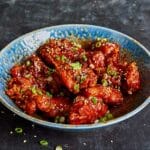Exploring the Origins of Bibimbab
Introduction
Bibimbab, which translates to “mixed rice,” is a traditional Korean dish known for its colorful assortment of ingredients harmoniously combined in a single bowl. With a history spanning centuries, bibimbab has evolved from a simple peasant meal to a cherished culinary delight enjoyed by people around the world.Definition of Bibimbab
Bibimbab is a rice-based dish that typically consists of steamed rice topped with an array of seasoned vegetables, protein such as beef or tofu, and a flavorful sauce. The ingredients are meticulously arranged on top of the rice, creating a visually appealing presentation. Before eating, the dish is mixed thoroughly, allowing the flavors to blend together.History of Bibimbab
To understand the origins of bibimbab, we must delve into the historical context of Korean cuisine. Korean food is deeply rooted in agricultural traditions and emphasizes the use of locally sourced ingredients. Bibimbab, with its combination of grains, vegetables, and protein, exemplifies the traditional Korean dietary philosophy of balance and harmony.Origins of Bibimbab
Ancient Korean Cuisine
The origins of bibimbab can be traced back to ancient Korean cuisine, where rice was a staple food. It is believed that bibimbab evolved from the practice of mixing leftover rice with various ingredients for a satisfying and nutritious meal. This resourceful approach allowed people to minimize waste while creating a flavorful dish.Royal Court Cuisine
During the Joseon Dynasty (1392-1910), bibimbab gained prominence as part of the royal court cuisine. It was served to the king and nobles, showcasing the culinary excellence and artistic presentation that characterized the era. The royal court version of bibimbab featured a wide range of ingredients, including marinated meats, mushrooms, and exotic vegetables.Regional Variations
As bibimbab spread throughout Korea, regional variations emerged, each with its unique twist. For example, Jeonju bibimbab is known for its use of a variety of vegetables and a savory soy-based sauce, while Jeju Island bibimbab incorporates seafood such as abalone and sea cucumber. These regional variations contribute to the diverse and dynamic nature of bibimbab.
Ingredients of Bibimbab
The key components of bibimbab are rice, vegetables, protein, and seasoning. Each ingredient plays a vital role in creating the distinctive flavors and textures that make bibimbab so enticing.Rice
High-quality short-grain rice is the foundation of bibimbab. The rice is cooked to perfection, resulting in a slightly sticky texture that enhances the overall mouthfeel of the dish.Vegetables
A medley of fresh and colorful vegetables brings vibrancy and nutritional value to bibimbab. Common vegetables used include carrots, spinach, mushrooms, bean sprouts, and zucchini. These vegetables are blanched or stir-fried with seasonings to enhance their flavors.Protein
Protein is an essential component of bibimbab, providing satiety and adding depth to the dish. Thinly sliced beef, chicken, pork, or tofu are popular choices for protein. The protein is marinated and cooked until tender and flavorful.Seasoning
Bibimbab is seasoned with a savory sauce called gochujang, which is made from fermented soybeans and red chili peppers. Gochujang adds a delightful spiciness and umami taste to the dish. Other seasonings may include sesame oil, soy sauce, garlic, and sesame seeds, which further enhance the overall flavor profile.
Preparation of Bibimbab
Bibimbab can be prepared using traditional methods or modern variations, depending on personal preferences and culinary innovations.Traditional Method
In the traditional method, each ingredient is individually prepared and arranged on top of the rice in an aesthetically pleasing manner. The dish is then presented to the diners, who mix it thoroughly before eating.Modern Variations
With the evolving culinary landscape, modern variations of bibimbab have emerged. Some restaurants serve bibimbab in a hot stone bowl, which creates a crispy layer of rice at the bottom, known as nurungji. Other variations include bibimbab wraps, where the ingredients are wrapped in a sheet of seaweed or lettuce for a convenient and portable meal.Popularity of Bibimbab
In recent years, bibimbab has gained global recognition and has become a favorite among food enthusiasts. Its popularity can be attributed to its delicious taste, vibrant presentation, and the growing interest in Korean culture and cuisine worldwide. The accessibility of bibimbab in Korean restaurants and its adaptability to various dietary preferences have contributed to its widespread appeal.Traveling on a Budget: Money-Saving Tips for Adventurers
Health Benefits of Bibimbab
Beyond its delightful flavors, bibimbab offers several health benefits. The combination of rice, vegetables, and protein provides a well-balanced meal rich in essential nutrients, fiber, and antioxidants. Additionally, the use of fermented ingredients in bibimbab, such as gochujang, promotes gut health and aids digestion.Conclusion
Bibimbab, with its origins deeply rooted in Korean culinary history, continues to captivate palates worldwide. From its humble beginnings as a thrifty rice dish to its evolution as a cultural icon, bibimbab represents the essence of Korean cuisine—balance, harmony, and the celebration of fresh ingredients. So, next time you have the opportunity to savor this delightful dish, embrace the rich heritage and enjoy the symphony of flavors that is bibimbab.What are the Origins of the Will Trent Series?
The intrigue of will trent series lies in its fascinating origins. Created by acclaimed author Karin Slaughter, this thrilling crime series takes readers on a captivating journey into the complex world of its main character, Will Trent. With gripping plots and deftly woven narratives, Slaughter’s masterful storytelling has propelled this series to become a beloved favorite among suspense enthusiasts.








